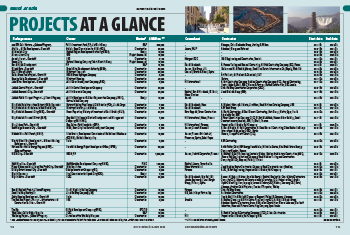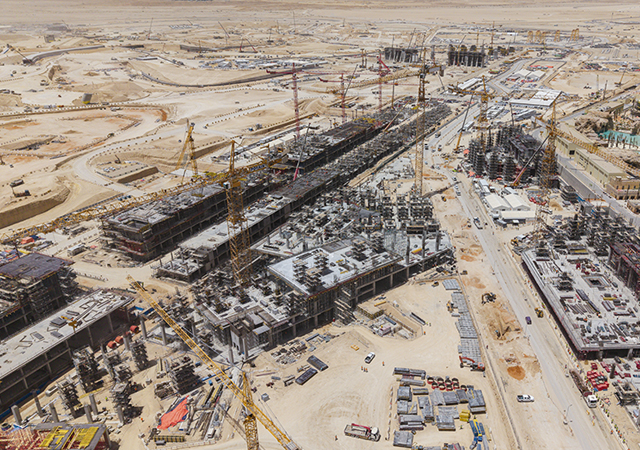
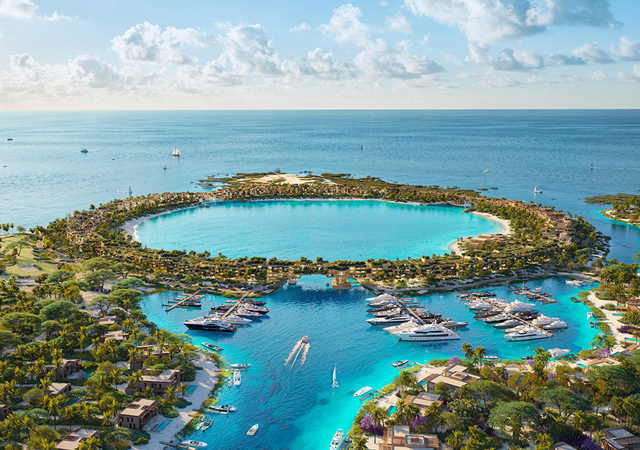 Laheq Island, a new “lifestyle destination” within the Red Sea archipelago.
Laheq Island, a new “lifestyle destination” within the Red Sea archipelago.
The groundbreaking Red Sea Project is making steady progress towards its goal of becoming a leading global tourism destination, with construction well under way on a range of luxury resorts and supporting infrastructure, according to a senior official of Red Sea Global (RSG), the developer of regenerative tourism developments along the kingdom’s western coast.
The first phase of the multibillion-dollar development is aimed to be completed by the end of this year. This includes 16 resorts, an international airport, and related infrastructure. Five resorts are already operational, and construction is in the advanced stages on the remainder, Fahad Al Balawi, Head of Construction at RSG, tells Gulf Construction’s Bina Goveas in an exclusive interview.
“By the time Phase One is fully open, we’ll have around 3,000 hotel keys in operation across The Red Sea destination,” he reveals.
Al Balawi says the total value of construction contracts awarded to date exceeds SAR32 billion ($8.5 billion) across more than 1,300 contracts, with around 70 per cent of the value awarded to Saudi companies. Major local firms involved include Al-Ayuni, Al Rawabi, and the Saudi Binladin Group.
Flagship resorts such as Six Senses Southern Dunes, The St Regis Red Sea Resort, and Shebara Resort on Sheybarah Island have already opened and the focus is now on completing the remaining 11 hotels on Shura Island, the project’s main hub. These include renowned brands such as Raffles, SLS, Rosewood, Faena, Fairmont, Grand Hyatt, and Miraval.
“Construction on Shura Island is in its final stages,” Al Balawi confirms.
Infrastructure like the marina and golf course is well-advanced, and RSG remains on track to complete all 16 hotels of Phase One by the end of 2025, with gradual openings planned throughout the year.
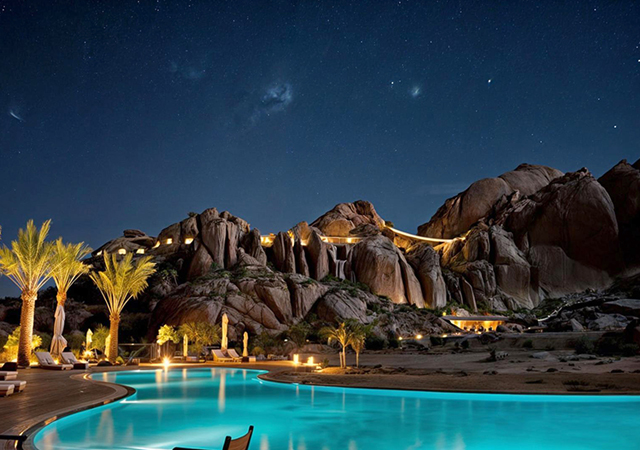 |
|
Desert Rock resort, carved into a canyon, is an example of architectural innovation that respects the environment. |
Last month, RSG unveiled yet another concept with the launch of Laheq Island, a new “lifestyle destination” within the Red Sea archipelago that will offer an exclusive blend of private ownership, hospitality, and sustainability. The announcement marks a significant evolution of RSG’s vision, moving beyond resort-focused developments towards creating integrated resort-residential island communities (See Saudi Focus).
Apart from The Red Sea destination, RSG is also developing AMAALA, its wellness destination, with over 600 contracts worth SAR23 billion awarded to date. The first AMAALA resorts are expected to open in 2025, with phased expansions continuing through the decade.
“So, 2025 is a watershed year: The Red Sea and AMAALA are both transitioning from construction to operational phase for key assets,” Al Balawi remarks.
By 2030, RSG plans to complete 50 hotels and over 1,000 residential units at The Red Sea Project, and 25 hotels at AMAALA.
RSG’s collection of luxury branded homes – Red Sea Residences – are available for private purchase at The Red Sea. The first handovers are scheduled for 2024–2025. Current offerings include Nujuma, a Ritz-Carlton Reserve Residence comprising 19 ultra-premium villas on Ummahat Islands; Jumeirah The Red Sea Residences with 32 waterfront homes on Shura Island; and Miraval The Red Sea Residences, featuring 20 wellness-focused villas on Shura Island.
Sustainability and innovative design
The Red Sea Project is poised to reshape the future of global tourism by integrating ultra-luxury with unprecedented sustainability and architectural innovation.
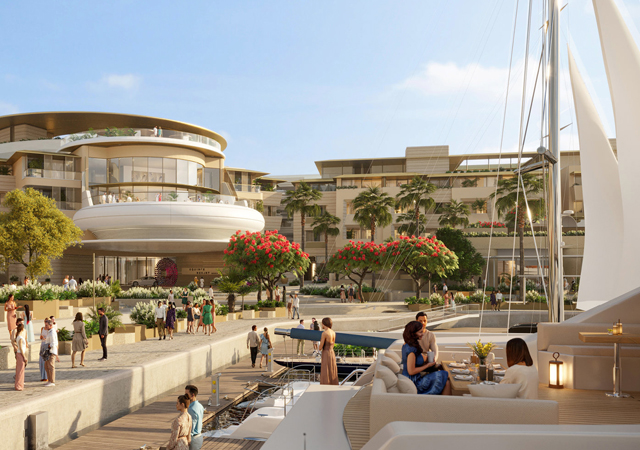 |
|
Equinox Resort AMAALA, designed by Foster + Partners, has been curated to ensure complete connectivity to the surrounding area at the AMAALA Marina Village. |
Al Balawi points to flagship designs like the Sheybarah Island overwater and beachfront villas, crafted from stainless steel to mirror the sky and sea, and the Desert Rock mountain resort carved into a canyon, as examples of architectural innovation that respects the environment. “These designs are catching the world’s attention because they ‘rewrite the rules’ of resort design, showing that development can be bold and iconic without compromising nature,” he explains.
Sustainability is not just a concept but a core principle with tangible targets. RSG aims for a 30 per cent net conservation benefit by 2040, meaning the flora and fauna at its destinations will be more abundant post-development. This is being achieved by limiting development to just 22 out of over 90 islands and capping visitor numbers.
Innovative construction methods are central to minimising environmental impact. Al Balawi details the extensive use of off-site fabrication and modular construction to reduce on-site disturbance. A dedicated facility in Saudi Arabia produces pre-fabricated units for the Coastal Village, which are then installed with minimal impact. The 3-km causeway to Shura Island was engineered to avoid disrupting water flow or marine life, with no coral reef dredging permitted. The Coral Bloom design on Shura Island by Foster + Partners uses land contours to protect the island naturally.
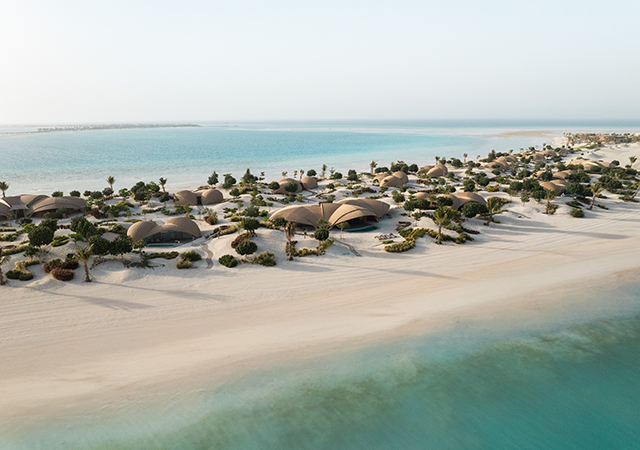 |
|
A Ritz-Carlton Reserve Residence |
“Sustainability KPIs are embedded into every contract,” Al Balawi adds. Electric construction equipment is prioritised, and a zero waste-to-landfill policy is in place during construction. A notable innovation is the 8.3 hectares of constructed wetlands for natural wastewater treatment, ensuring zero discharge into lagoons and the sea. Treated water is then reused for irrigation.
Beyond aesthetics, the Red Sea Project is pioneering sustainable operations. Al Balawi emphasises its commitment to being the world’s first tourism destination powered entirely by renewable energy, independent of the national grid and with no on-site fossil fuels.
“We’re building the region’s largest battery storage facility and have over 760,000 solar panels in place,” he notes.
The project has also eliminated single-use plastics, implemented smart technology for energy and water efficiency, and designed the Red Sea International Airport (RSI) to utilise natural cooling and solar power.
By 2030, RSG aims to have planted 50 million mangroves and achieved net positive conservation outcomes. The renewable energy systems across both The Red Sea and AMAALA will form one of the world’s largest tourism microgrid networks (see interview on Page 26).
Management strategies
Managing a large-scale development across a diverse and remote landscape requires a multifaceted approach. RSG’s strategies are backed by a strong workforce infrastructure by providing high-quality accommodation and welfare for employees; and comprehensive quality control measures and inspections at every stage.
Al Balawi acknowledges the challenges of managing a project of this scale in a remote coastal environment, including logistical complexities, maintaining quality across multiple sites, and ensuring environmental protection. However, he expressed confidence that RSG’s strategies and commitment to sustainability will ensure the successful delivery of The Red Sea Project as a world-class, environmentally responsible tourism destination.
Excerpts of the interview with Fahad Al Balawi, Head of Construction at Red Sea Global:
The first five resorts at The Red Sea Project opened in 2023/24, with the remaining 11 hotels planned under the first phase expected to open this year. Please provide an update on the progress of these facilities?
Phase One of The Red Sea Project is well under way, and it’s incredibly exciting to see these resorts coming to life. We’ve already opened five resorts as part of Phase One. Our very first was Six Senses Southern Dunes, an inland desert retreat that welcomed guests in late 2023 as the maiden resort at The Red Sea. Next, we introduced our first island properties: The St Regis Red Sea Resort opened in January 2024 on Ummahat Islands (90 beautiful overwater and beach villas designed by Kengo Kuma), and a few months later in May 2024 we opened Nujuma, a Ritz-Carlton Reserve on a nearby island, offering 63 ultra-luxe villas designed by Foster + Partners.
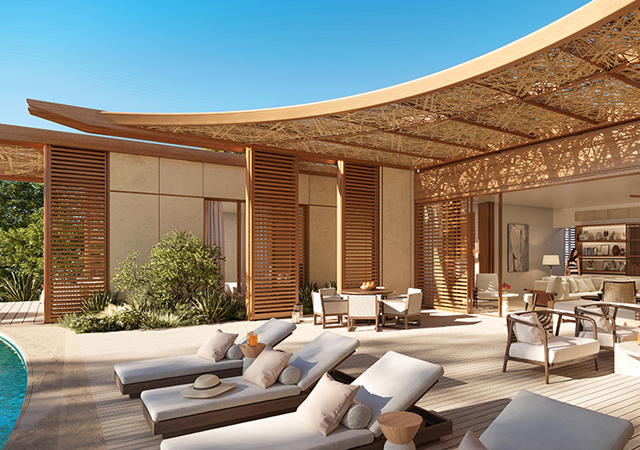 |
|
Jumeirah The Red Sea Residences |
In November 2024, we began welcoming guests to Sheybarah Island at our very own Shebara Resort. This is a flagship for us because it’s the first resort fully operated by Red Sea Global itself. Sheybarah’s design is truly iconic – those mirror-finish orbital villas are part of this resort, and they offer an otherworldly experience. Then in December 2024, we opened Desert Rock Resort, tucked in the canyons inland, which became our fifth operational resort. So by the end of 2024, five Phase One resorts were up and running, ranging from inland desert hideaways to exclusive island getaways.
Now the focus is on completing the remaining Phase One resorts, many of which are clustered on our main hub, Shura Island, the centerpiece of Phase One which will host 11 world-class hotels including Raffles, SLS, Rosewood, Faena, Fairmont, Grand Hyatt, Miraval, Edition, InterContinental, Jumeirah, and Janya (our new Equinox brand resort) – it’s a star-studded lineup. Construction on Shura Island is in its final stages. The island’s infrastructure – like the marina with nearly 120 berths and the 18-hole championship golf course – is well advanced, and the resorts themselves are coming together quickly. For example, the Jumeirah Red Sea Resort (which includes Jumeirah’s branded residences) is nearing completion, and we know Jumeirah plans to bring its signature lavish hospitality to its 159-room property. Miraval The Red Sea, Hyatt’s renowned wellness brand, is also taking shape on Shura; it will be Miraval’s first resort outside the US, focusing on holistic well-being with 180 keys including private villas. And brands like Raffles, SLS, and Faena are in the final fit-out and interior design phases, each adding their own flair – from Raffles’ classic palatial elegance to SLS’s chic vibe and Faena’s artistic touch.
Importantly, we remain on track to complete all 16 hotels of Phase One by the end of 2025. Gradual openings are planned throughout 2025. By the time Phase One is fully open, we’ll have around 3,000 hotel keys in operation across The Red Sea destination. It’s a staggered schedule to ensure each resort opens flawlessly.
Phase One will truly showcase the breadth of our offering: every resort ultra-luxury, yet every one unique, and all of them unified by our commitment to sustainability and exceptional quality.
Can you highlight the progress on Shura, Ummahat and Sheybarah islands?
Absolutely. Each of those areas represents a different aspect of The Red Sea destination, and together they paint the full picture of what we’re creating:
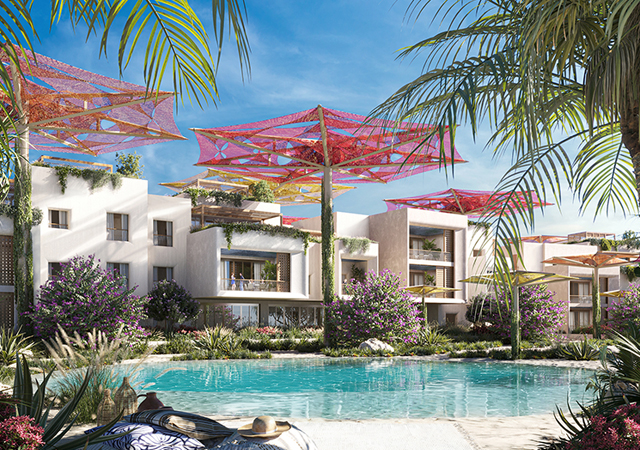 |
|
By 2030, RSG plans to offer over 1,000 residences at The Red Sea Project. The Red Sea Residences currently include Nujuma |
• Shura Island: This is our main hub island and the busiest construction zone in Phase One. Shura (also known as Shurayrah) is often recognised by its natural dolphin shape. Development here is nearly complete for Phase One – as mentioned, 11 hotels are in the final stages. We’ve finished major infrastructure: a 3-km causeway now links Shura to the mainland, courtesy of Archirodon, making logistics and access much easier. The Coral Bloom concept by Foster + Partners has guided Shura’s development, meaning the hotels are designed to blend into the island’s untouched beaches and lagoons. Right now, you can see fully built structures for all resorts; many are in interior fit-out. The marina is constructed and was flooded with water by the end of 2023, the golf course grass is being laid, and landscaping is under way. We expect Shura Island to welcome its first guests in 2025, essentially unveiling the heart of The Red Sea Project with its array of resorts, marina village, golf clubhouse, and retail promenade. It will be the vibrant core of the destination, and seeing it transform from a blueprint to reality over the past few years has been rewarding. We can confidently say Shura is on schedule to be the showpiece of The Red Sea by next year.
• Ummahat Islands: The Ummahat archipelago is a group of smaller, pristine islands, and it’s where we’ve delivered our first island resorts. The status here is that two luxury resorts are fully open and operational: St Regis Red Sea Resort with 90 stunning villas (many overwater); and nearby on a neighbouring islet, Nujuma, a Ritz-Carlton Reserve with 63 ultra-private villas. We purposely kept Ummahat Islands lightly touched – just these two resorts and their related amenities. The islands remain 90 per cent pristine; we built with a light footprint, using boardwalks and soft sand paths instead of concrete, where possible. Looking ahead, we don’t plan additional development on Ummahat in Phase One beyond these resorts – it’s all about operating them to the highest standard and ensuring the environment around them continues to flourish.
• Sheybarah Island: Sheybarah is a jewel in our portfolio – remote (about 45 minutes by boat from the coast), wild, and home to sensitive coral ecosystems. Development on Sheybarah Island is essentially complete for Phase One. We have Shebara Resort (operated by RSG), featuring 73 futuristic pod-like villas, up and running as of late 2024. The island now has its overwater villa circuit, beachfront villas, a central restaurant and spa, and back-of-house facilities, all completed. What’s unique is that Sheybarah has no permanent human population or infrastructure except the resort, so we had to build everything from scratch: power, water, sewage systems, staff housing, etc, entirely self-sustained. We’ve done that and still managed to keep 100 per cent renewable power and zero discharge. In terms of construction status: it’s done. We’ll continue monitoring the reef around the island and implementing our conservation programmes there – including a state-of-the-art coral nursery nearby – to ensure the island’s ecosystem regenerates while guests enjoy its beauty.
What are the key milestones and anticipated completion dates for the remaining development areas of The Red Sea Project leading up to 2030?
We have a clear roadmap through the end of the decade, and several major milestones will mark our journey:
• 2025 – Completion of Phase One (The Red Sea): By the end of 2025, The Red Sea Project’s Phase One will be fully realised, meaning 16 resorts, Red Sea International Airport, the marina, and all supporting infrastructure will be operational. This is our immediate goalpost. Concurrently, AMAALA, our second flagship destination, is slated to welcome its first guests in 2025 as well. At AMAALA’s Triple Bay site, the first trio of resorts (Rosewood, Six Senses, and Four Seasons) are on track to open around that time. So 2025 is a watershed year: The Red Sea and AMAALA both transitioning from construction to operational phase for key assets.
• 2026-2027 – Phased resort openings and AMAALA Phase Two: After Phase One, The Red Sea will continue to grow in phases. We’ll likely see additional resorts coming online on other islands or inland sites that are part of our masterplan. For example, beyond Shura, Sheybarah, and Ummahat, there are other islands earmarked for later phases. We haven’t publicly announced all the Phase Two resorts yet, but development will be ongoing to reach our ultimate target of 50 hotels by 2030. In AMAALA, after the initial Triple Bay openings in 2025, we’ll move to complete the rest of Triple Bay’s offerings by around 2026. That includes more hotels (like Clinique La Prairie and Jayasom wellness resorts in the Wellness Core of Triple Bay), the Triple Bay Marina Yacht Club, and the remainder of the 18-hole golf course. By 2026, Triple Bay should be fully operational as a luxury wellness and yachting destination. Simultaneously, AMAALA’s subsequent phases – The Coastal Development and The Island (two other key zones in AMAALA’s masterplan) – will be under construction. We anticipate AMAALA as a whole will be substantially completed before 2030, potentially around 2027-2028, with upwards of 25 hotels across its three main areas.
• 2028-2029 – Expanded offerings and guest capacity ramp-up: In these years, we’ll likely open any remaining resorts in The Red Sea Project’s pipeline, including more inland adventure resorts or additional island retreats. We also plan to inaugurate more residential communities (our Red Sea Residences and AMAALA Residences) as they get completed. Red Sea International Airport will expand its flight services further – by then accommodating direct flights from key international markets as we scale toward our cap of one million visitors annually. Internally, we’ll be refining operations, scaling up hospitality training programmes, and ensuring that the growing number of assets all adhere to our quality and sustainability standards as the footprint grows.
• 2030 – Project completion and full operations: Come 2030, we expect to have delivered the entirety of The Red Sea and AMAALA projects as originally envisioned (and possibly some new additions along the way). For The Red Sea, that means 50 hotels with up to 8,000 keys, and over 1,000 residential properties spread across 22 islands and six inland sites. The final batch of hotels and residences would be completed by this time. The carrying capacity will be calibrated to about one million visitors per year to ensure exclusivity and environmental balance. For AMAALA, the full complement of its ultra-luxury resorts (around 25 hotels, 900 or so keys) focusing on wellness, art, and sea adventures will be live. Both destinations will then collectively offer around 75 hotels (if you combine Red Sea’s 50 and AMAALA’s ~25) – a huge addition to Saudi Arabia’s tourism landscape.
Throughout this timeline, we have some cross-destination milestones too: For instance, by 2030, we aim to have planted 50 million mangroves as part of Saudi’s broader initiative (with RSG contributing a chunk of that), and to have achieved the net positive conservation outcomes we’ve committed to. Also, by 2030 our renewable energy systems will be fully scaled – likely connected across Red Sea and AMAALA – making this one of the world’s largest tourism microgrid networks.
I’d also note that 2030 is not an “end” but a benchmark. It aligns with Saudi Vision 2030, so it’s a natural horizon for us. By then, the idea is that The Red Sea and AMAALA are mature, thriving destinations. Key dates to watch before then: 2025 (Phase One done, AMAALA opens), 2026 (AMAALA Triple Bay complete), 2027-28 (balance of Red Sea Phase Two/Three resorts delivered), and finally 2030, when we cut the ribbon on the last asset and celebrate full completion. From there, RSG’s focus may shift to operating these destinations at full capacity and potentially launching new projects beyond. But in terms of current project pipeline – 2030 is the big vision milestone where everything we’ve promised comes to fruition, marking the delivery of two world-class, fully sustainable destinations on the Red Sea.
What is the total value of construction contracts awarded to date on The Red Sea Project?
The scale of investment in The Red Sea and AMAALA is indeed enormous – and it reflects our rapid progress. To date, we have awarded over 1,300 contracts with a total value of nearly SAR32 billion (about $8.5 billion) at The Red Sea. This figure covers everything from big infrastructure and hotel construction contracts down to smaller service agreements. It’s a tangible indicator of how much work is under way and how far we’ve come since starting from a blank slate a few years ago.
What’s really satisfying is not just the headline number, but the way those contracts have been distributed. Approximately 70 per cent of the total contract value has been awarded to Saudi companies. This was a deliberate strategy – we want to maximise local economic benefit and develop Saudi talent and enterprises. When international firms win contracts, they often partner with local firms, transfer knowledge, or establish local offices. For instance, we have major Saudi contractors like Al-AYuni, Al Rawabi, and Saudi Binladin Group involved, as well as global firms working closely with them. So that SAR32 billion is heavily cycling back into the Saudi economy, creating jobs and building capabilities.
AMAALA, which is still in early-phase construction, has seen over 600 contracts worth around SAR23 billion awarded so far.
One more point: beyond construction, we’re also signing significant operational contracts. For example, we recently signed a multi-billion-riyal contract for hospitality services (catering, facilities management) to support the operation of our destinations. Those often don’t get counted in “construction contracts” tallies, but they add to the economic impact. All told, by the end of development, the investment will be on the order of tens of billions of dollars. And importantly, the economic activity doesn’t stop at completion – once open, the destinations will contribute on the order of SAR 33 billion annually to the kingdom’s GDP through tourism spending and associated value chain impacts.
Red Sea Global has just announced the development of Laheq Island. Please elaborate on this development
Laheq Island is one of our new lifestyle destinations in the pipeline and it embodies the next evolution of our vision. If The Red Sea and AMAALA are about creating resorts, Laheq is about creating an exclusive island community. It’s being developed as an integrated resort-residential island by RSG, and it represents a blend of private ownership, hospitality, and sustainability all in one. Laheq Island is a sizable island within the Red Sea archipelago, blessed with pristine coral reefs, white sand beaches, and mangrove forests. Our plan for Laheq is anchored in the “Forever Garden” concept designed by Foster + Partners, which means the architecture and landscaping are woven together – imagine villas and apartments nestled in lush gardens that flow seamlessly into the natural environment.
On Laheq, we’ll have two luxury resort hotels and over 740 residences including a mix of beach villas, golf-front villas, community villas with private docks, and even unique ring-shaped apartments offering panoramic views. What sets Laheq apart is that it’s primarily a residential private island, supported by five-star amenities. Owners of the homes will have exclusive access to a vibrant marina with 115 berths for yachts, an 18-hole golf course, a bustling souq, fine dining, and wellness facilities.
Sustainability, of course, is at the core of Laheq’s development. The entire island will be powered by renewable energy, just like our other projects. The design minimises environmental impact – we’re using elevated structures and careful site placement to protect mangroves and turtle nesting beaches. And we’ll enhance the ecosystem with extensive landscaping and habitat restoration; Laheq will actually increase the green cover and provide sanctuary for wildlife. We often describe Laheq as “a unique new lifestyle destination blending private island luxury and sustainability” – because it truly will offer the best of both worlds. Residents get the privacy, security, and exclusivity of owning on a remote island, but with all the services of a world-class resort and the peace of mind that it’s developed responsibly.
Laheq is still in earlier stages of development compared to The Red Sea main project – we’re finalising masterplans and starting initial works. But interest is already high; it’s the kind of place people can imagine spending extended time – perhaps part of the year as a second home, or even a primary home post-retirement. It’s very much aligned with the emerging trend of “liveable tourism” – where the lines blur between tourism and residential lifestyle. And crucially, Laheq will continue our legacy of regenerative development: its reefs will be monitored, its energy 100 per cent clean, its water self-sufficient, and its carbon footprint minimal.
Elaborate on the residential offering of The Red Sea Project?
Red Sea Residences, which is our collection of luxury branded homes available for private purchase at The Red Sea, offers an island lifestyle that mirrors the quality of our resorts, allowing people to own a slice of this paradise. We’ve announced several branded residential projects so far, each affiliated with a top-tier hospitality brand:
• Nujuma, a Ritz-Carlton Reserve Residence: Located on Ummahat Islands next to the Nujuma resort, this enclave features 19 ultra-premium villas. These are super-exclusive beachfront and overwater homes, accessible only by boat or seaplane, giving owners unparalleled privacy. Since the adjacent Nujuma Ritz-Carlton Reserve resort opened in 2023, a number of these villas have already been snapped up by eager buyers even before formally hitting the market. Owners here will enjoy the refined services of Ritz-Carlton Reserve.
• Jumeirah The Red Sea Residences: This is Jumeirah’s first residential offering in Saudi Arabia, situated on Shura Island as part of the Jumeirah Red Sea resort. There are 32 waterfront homes ranging from one- to four-bedroom units. Each residence is right on the beach, featuring its own infinity pool and panoramic Red Sea views. The interiors are being designed by Champalimaud to reflect Jumeirah’s signature contemporary elegance and to harmonise with the coastal setting.
• Miraval The Red Sea Residences: Miraval, Hyatt’s acclaimed wellness resort brand, is offering 20 villas dedicated to holistic living on Shura Island, integrated with the Miraval resort. Notably, Miraval at The Red Sea will be the brand’s first resort outside the US. Each Miraval residence is designed as a sanctuary of calm: one- to four-bedroom villas that come with private wellness amenities like meditation gardens and outdoor plunge pools. Owners will have the Miraval Life in Balance Spa at their doorstep – which happens to be the largest spa in our destination.
All these branded homes follow the same development ethos as our resorts. They’re built with sustainable materials, powered by 100 per cent renewable energy, and set within lush landscapes that preserve sightlines and privacy. Importantly, as the master developer and operator, RSG controls the entire environment around these residences. We like to say that at Red Sea Residences, ‘your backyard is a marine protected area’.
In terms of timeline, construction of these residences is under way in parallel with the hotels. The Ritz-Carlton Reserve villas on Ummahat were the earliest to come to market. The Jumeirah and Miraval residences on Shura Island will be completed alongside their resorts, which are slated to open in 2025. We anticipate handover to homeowners by late 2025 for those, once the resorts are fully up and running. Essentially, as Phase One closes out, the first residents will be moving in. We’re carefully scheduling it so that when an owner gets the keys, not only is their home finished to the highest spec, but the services (like concierge, in-residence dining, maintenance) provided by the adjacent hotel are also ready from day one.
Beyond these, we have plans for additional residential offerings as the destination grows, including unbranded community villas and apartments. But our branded residences – Ritz-Carlton Reserve, Jumeirah, Miraval, and previously announced Six Senses and St Regis branded villas – set the standard. In total, The Red Sea will ultimately have over 1,000 residential properties by 2030, all of which will benefit from the destination’s amenities and environmental protections. The response from investors and second-home seekers has been extremely positive; there’s a real appetite for owning part of an unspoiled private island in a secure, serviced environment. We’re building a high-end community, and by 2025 that community’s first members will be calling The Red Sea home.
Turtle Bay Village was established to house the project’s workforce. Can you describe the facilities and how it supports the well-being of the employees?
Turtle Bay Village is our solution to a challenge many mega-projects face: how to house and care for the thousands of workers and staff who are building and operating the destination. Rather than a typical labour camp, we invested in creating a state-of-the-art residential town for our employees. Turtle Bay Village opened in 2023 and currently is home to around 6,000 residents – these include construction workers, RSG staff, hotel pre-opening teams, and management personnel. Eventually, as the destination ramps up, it will accommodate up to 14,000 people who will live and work at The Red Sea. Essentially, we built a small city from scratch.
The village offers all the amenities and comforts one would expect in a modern community. Impressively, the design and sustainability standards of these homes are top-notch: Turtle Bay’s villas and townhouses achieved LEED Platinum certification, and the Turtle Bay Hotel (on-site) earned Green Key and Mostadam Diamond sustainability certifications. This means our staff housing isn’t just bare-bones; it’s built to be eco-friendly, energy-efficient, and comfortable, with plenty of natural light and green spaces, which contributes to wellness.
Turtle Bay Hotel serves as accommodation for rotating contractors, consultants, and business visitors to site, and also as a recreational hub for residents. The hotel has restaurants, a pool, and lounge areas where staff can unwind. We recognised that happy employees make for high-quality work, so well-being is a priority.
In Turtle Bay Village, residents have access to healthcare (there’s a clinic and emergency facilities), recreational facilities (gyms, sports courts, football fields, maybe even a cinema and game rooms), and everyday conveniences like a supermarket, bank, post office, and dining outlets. There are also communal parks and plazas – places to relax in the evening or weekends. We even have educational facilities and training centre there, since many staff are also in continuous upskilling programmes.
Wellness is woven into the design: tree-lined streets, jogging and cycling tracks, and strict health and safety standards.
One might ask why we went to such lengths. The reason is simple: our people are our greatest asset. To deliver a project of this quality, we need to attract and retain top talent at all levels, from construction labourers to engineers to hotel managers. Turtle Bay helps us do that. By providing comfortable living conditions and a good quality of life, we not only meet our duty of care, but we also improve productivity
Another point of pride: Turtle Bay Village is a sustainability showcase in its own right. It’s primarily powered by our renewable energy network (solar farm/battery), it has water and waste recycling facilities, and as mentioned, green building certifications across the board.
How do you ensure effective collaboration and communication between the numerous stakeholders involved?
The scope of what we’re doing truly “takes a village” – or rather, a world – of expertise. We recognised early that to achieve something unprecedented, we had to break down silos and get everyone working in unison under a shared vision.
From the outset, we assembled a diverse, world-class team and aligned them with our mission. We brought in top architects like Foster + Partners (who crafted the Coral Bloom concept for Shura Island and our new Laheq Island masterplan), leading engineering firms, sustainability consultants, and luxury hotel operators. But assembling them isn’t enough – the key was to make sure everyone from the master planner to the local subcontractor understood our core principles: sustainability, luxury, innovation, and community. We literally had workshops where we conveyed the importance of things like the regenerative approach and our zero-plastic policies.
Early integration is one strategy: we involved hoteliers and environmental experts in the design stage. That meant the design was optimised from the beginning for the brand standards and operational efficiency, reducing changes later. Likewise, environmental scientists and marine biologists were consulted at the concept stage of each island development. This upfront collaboration saved a lot of potential conflicts and retrofits down the line.
During execution, communication is king. We established a robust governance structure where all stakeholders interact regularly. We have joint management committees for different workstreams – for instance, a Design Review Board that includes our internal team, architects, hotel operator representatives, and sustainability officers. They review every design at milestones to ensure it meets our aesthetic and environmental standards. Similarly, we have a Construction Coordination Forum that meets frequently with all main contractors, where they share progress, flag issues, and coordinate interface points (like where one contractor’s scope meets another’s).
Co-location and on-site presence also matter. We encouraged our partners to station their key people on-site or in our offices in Riyadh or the project basecamp.
Another aspect is transparency with data and goals. All stakeholders have access to a central project management system where they can see updates, schedules, and even environmental monitoring results. We don’t hide issues – if a problem arises, we share it openly and invite input on solutions.
Shared success metrics help too. We set collective goals – like achieving Mostadam or LEED certifications, hitting our renewable energy targets, or opening resorts on time – and often tie incentives to those rather than just individual scope KPIs.
We work closely with local authorities, conservation organisations, and the communities of Umluj and Al Wajh nearby. By bringing them into the conversation (town halls, consultations, offering jobs and training), we ensure our project benefits and respects those stakeholders, which in turn fosters a cooperative atmosphere. Local fishermen, for example, have been engaged in our marine conservation plans, and their knowledge has been invaluable.
What is the long-term vision for The Red Sea Project beyond 2030, and how will it continue to contribute to the kingdom’s sustainable development goals?
The long-term vision is that The Red Sea Project and AMAALA stand as global exemplars of sustainable development well beyond 2030 – destinations that continue to thrive, inspire, and catalyse positive change.
Together, The Red Sea and AMAALA are projected to contribute around SAR33 billion to the kingdom’s GDP every year once fully operational.
But the vision isn’t just economic. It’s about showing that development can be regenerative. I foresee that by 2030, our environmental initiatives will have matured to the point that wildlife is more abundant than when we started. Perhaps we’ll see endangered species like the hawksbill turtles, dugongs, and birds thriving due to our protected zones and breeding programs. Our coral reef restoration efforts should yield results with new reef structures growing and improving fisheries. Achieving that 30 per cent net conservation benefit is just a milestone – by 2040, I’d like that to be even higher, say 40 or 50 per cent as techniques improve. Ultimately, we want to prove that humans can be stewards of the environment, not spoilers, even when building large resorts.
Looking beyond our two current projects, RSG’s mandate is expanding. We have several other projects in the pipeline up and down the Red Sea coast. Post-2030, I envision RSG applying the lessons from The Red Sea and AMAALA to new destinations – perhaps smaller boutique projects or even urban developments – becoming a global developer that exports this model of responsible development. We want to be known as the world’s most responsible developer, period. That means continuously raising the bar for ourselves and others.
Finally, beyond 2030, I want to ensure that RSG’s developments are self-sustaining communities. We’re not building ghost resorts that empty out; we’re building real communities with permanent residents (via our residences), with local businesses (we encourage SMEs to set up operations serving the resorts), and with infrastructure like the airport that also serves local needs. So, the vision is that these places continue to grow organically even after we “finish” construction.
In essence, the long-term vision is legacy: environmental legacy, economic legacy, human legacy.

















.jpg)













 (1).jpg)














































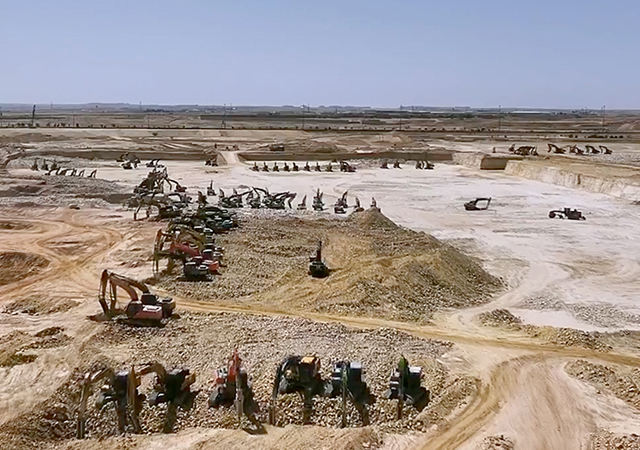
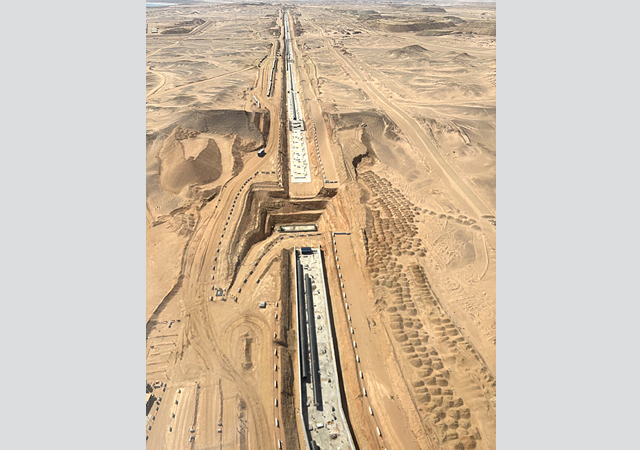
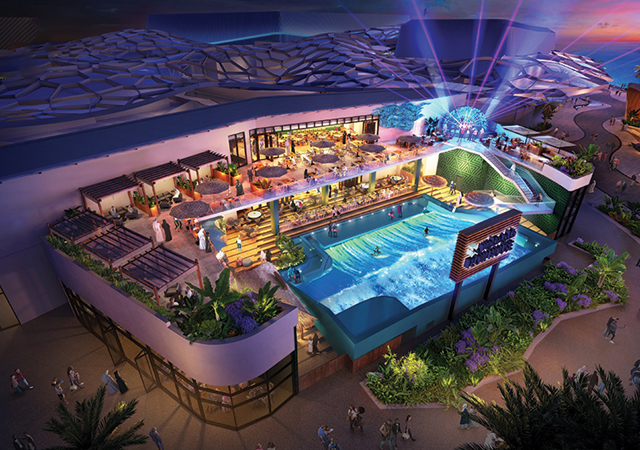
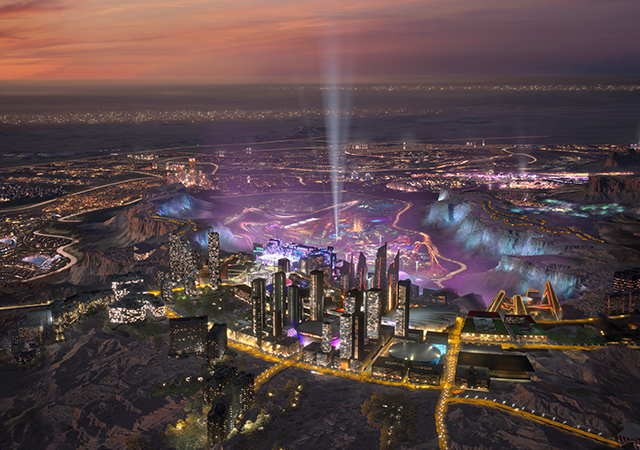
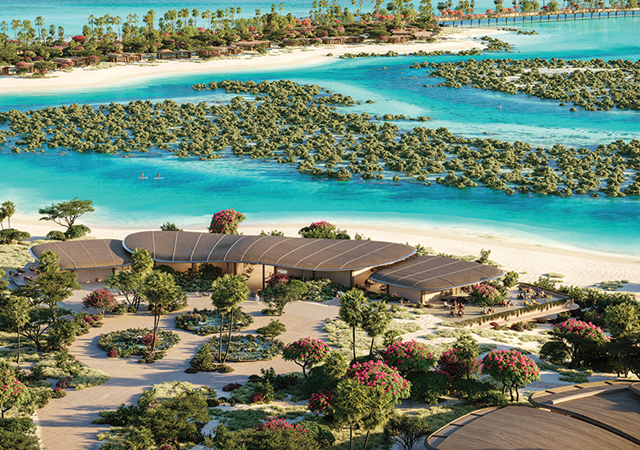
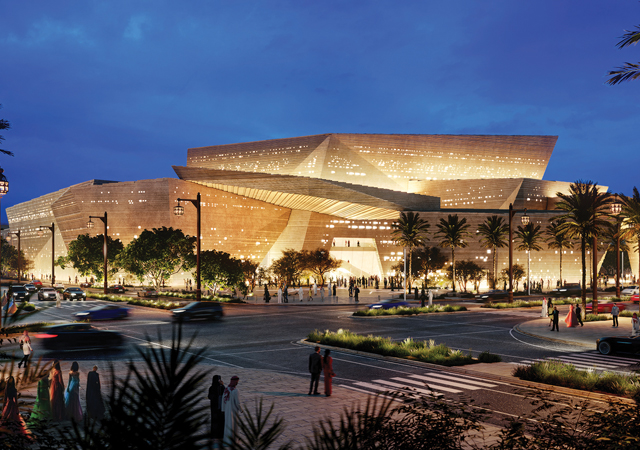
 BIG.jpg)
